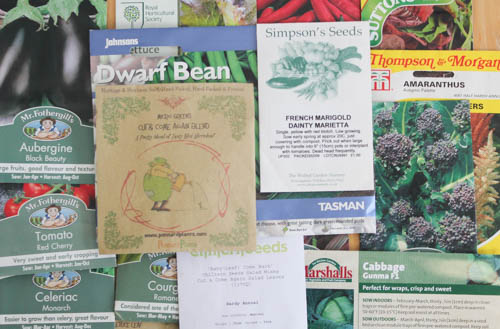
At this time of year, investment in a glasshouse is paying dividends by extending the growing season. Sow aubergine, celeriac, celery, lettuce, parsley, sweet and chilli peppers, tomatoes and French beans in pots, trays or modules in a propagator.
Larger seeds like peas can be sown in multipurpose compost; smaller seed like tomato and lettuce in seed compost. Put the bags of newly bought peat free seed compost, in the greenhouse for 24 hours to warm beforehand or fill pots and trays and warm them in the propagator. Warm a watering can of tap water (chlorine acts as a fungicide) in the greenhouse, too.
Before sowing, remove any lumps of material from the compost (there should be very few in good quality compost) then fill a tray or pot, tap the container on the potting bench or table several times to settle, take a board and cut off the excess compost, sweeping from the centre to the left and right, then firm (not compact) the surface with a pressing board so there is 14mm (1/2”) between the compost surface and the rim of the container to allow for watering. Soak the compost and allow it to drain, then sow the seed thinly and put it in the propagator. Small seeds can be watered by misting with a sprayer. If there is a compost cover to your propagator, remove it for half an hour each day and wipe off the condensation. Once the seeds have germinated, remove the lid or transfer the trays of seedlings into good but not bright or scorching sunshine and do not let them dry out.
Once seeds have germinated, they are ‘pricked out’ or transplanted individually to continue growing by carefully separating the small seedlings one from another and transplanting into single pots or modules. Do this when they are large enough to handle. First moisten the compost, lift small clumps of seedlings from the tray onto the bench using a small dibber, kitchen fork, pencil or plant label, then carefully tease them apart taking great care not to damage the roots and transplant into trays or modules of moist compost 2.5-5 cm apart. The hole should be large enough to accommodate the roots with the seed leaves just above the compost when transplanted.
Growing in modules avoids the necessity to ‘prick out’ and the associated root disturbance. Sow two or three seeds per module then thin, leaving the strongest seedling. To avoid disturbing the roots of the remaining seedling, remove the seed leaves of the weaker seedlings with your finger and thumb so they die back naturally.
Tomatoes, Chilli and Sweet Peppers and Aubergines should still be sown in a heated propagator. Tomatoes need 15-20C (60-70F); seedlings will appear in seven to ten days.
Celery seed needs a minimum of 15C (60 F) to germinate. Sow thinly on the surface of seed compost in trays pots or modules in late March. They need light to germinate, so cover them with fine layer of vermiculite or finely sieved compost.
Happy seed sowing. Matt










